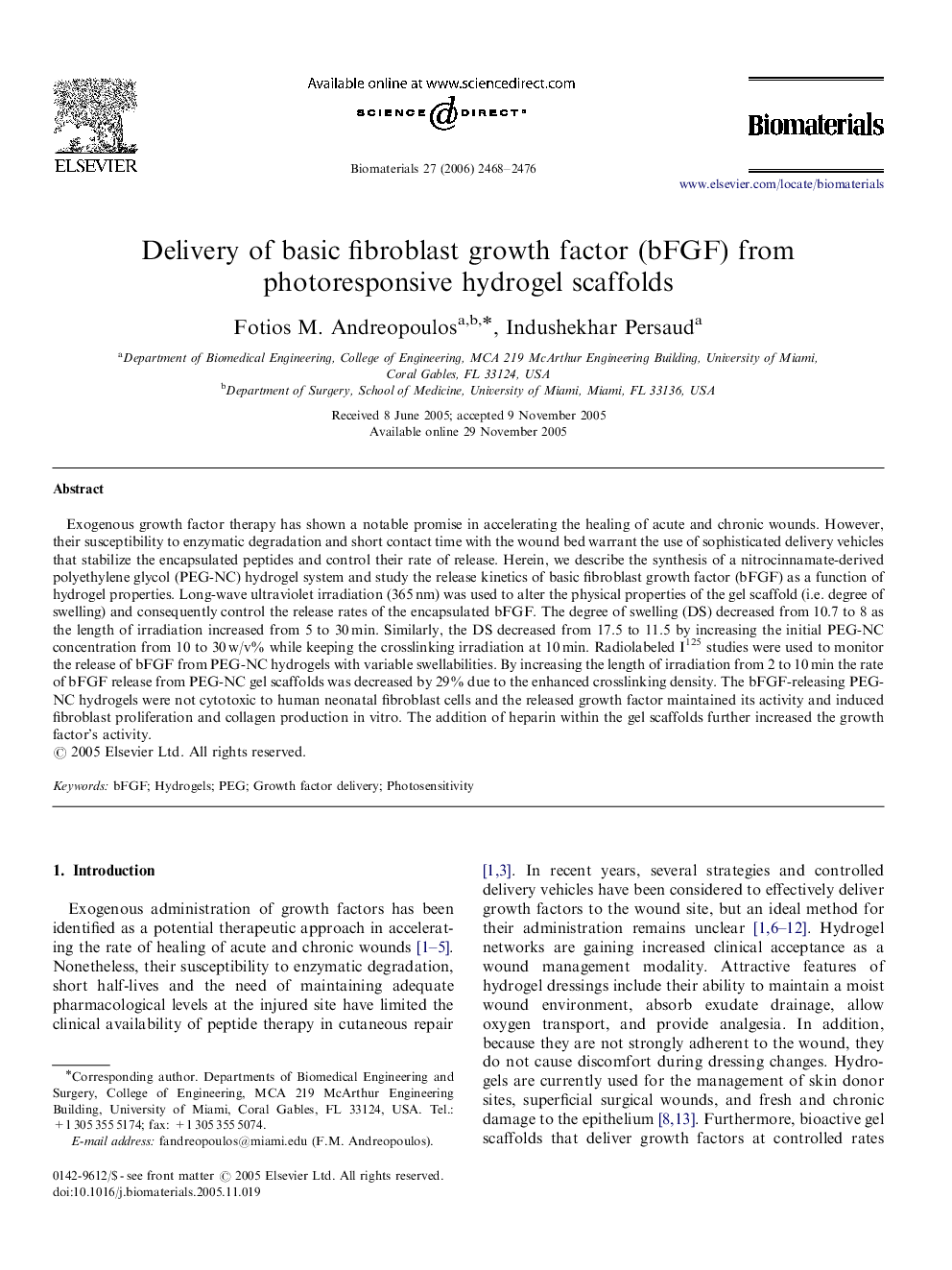| کد مقاله | کد نشریه | سال انتشار | مقاله انگلیسی | نسخه تمام متن |
|---|---|---|---|---|
| 11917 | 766 | 2006 | 9 صفحه PDF | دانلود رایگان |

Exogenous growth factor therapy has shown a notable promise in accelerating the healing of acute and chronic wounds. However, their susceptibility to enzymatic degradation and short contact time with the wound bed warrant the use of sophisticated delivery vehicles that stabilize the encapsulated peptides and control their rate of release. Herein, we describe the synthesis of a nitrocinnamate-derived polyethylene glycol (PEG-NC) hydrogel system and study the release kinetics of basic fibroblast growth factor (bFGF) as a function of hydrogel properties. Long-wave ultraviolet irradiation (365 nm) was used to alter the physical properties of the gel scaffold (i.e. degree of swelling) and consequently control the release rates of the encapsulated bFGF. The degree of swelling (DS) decreased from 10.7 to 8 as the length of irradiation increased from 5 to 30 min. Similarly, the DS decreased from 17.5 to 11.5 by increasing the initial PEG-NC concentration from 10 to 30 w/v% while keeping the crosslinking irradiation at 10 min. Radiolabeled I125 studies were used to monitor the release of bFGF from PEG-NC hydrogels with variable swellabilities. By increasing the length of irradiation from 2 to 10 min the rate of bFGF release from PEG-NC gel scaffolds was decreased by 29% due to the enhanced crosslinking density. The bFGF-releasing PEG-NC hydrogels were not cytotoxic to human neonatal fibroblast cells and the released growth factor maintained its activity and induced fibroblast proliferation and collagen production in vitro. The addition of heparin within the gel scaffolds further increased the growth factor's activity.
Journal: Biomaterials - Volume 27, Issue 11, April 2006, Pages 2468–2476